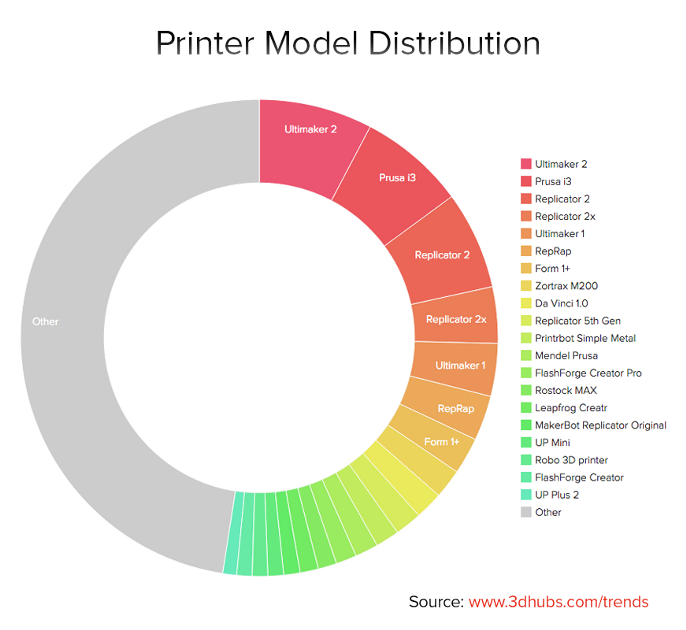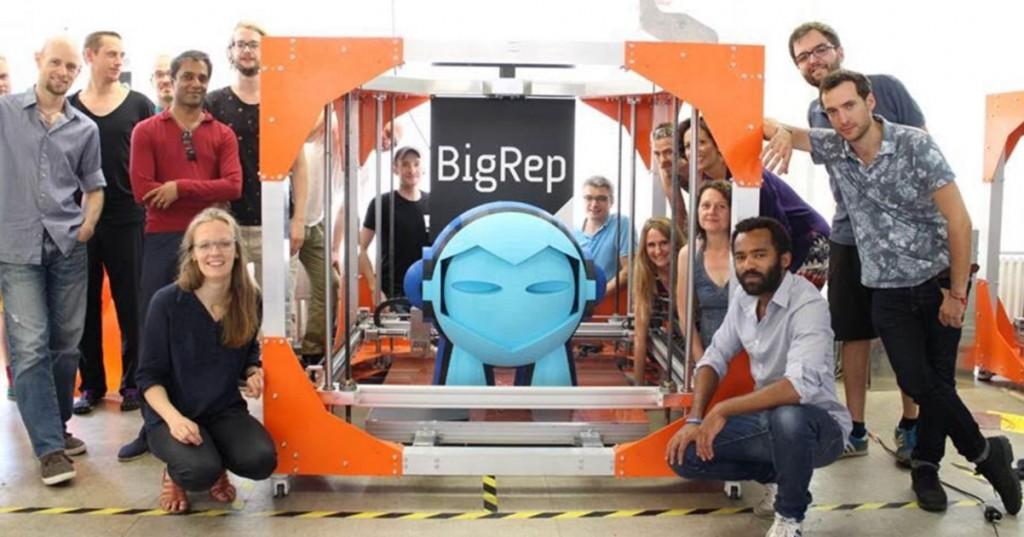It was idle printers that inspired the idea for 3D Hubs, the company that now joins a global network of well over  22,000 3D printers together all over the world. Bram de Zwart, co-founder of 3D Hubs, describes how he quit his job at a major 3D printer manufacturer after working in the industry for four years. Why? He, along with 3D Hubs co-founder Brian Garret, got an excellent idea. They wanted to figure out a way to get more of those 3D printers running when their owners weren’t using them for their own projects.
22,000 3D printers together all over the world. Bram de Zwart, co-founder of 3D Hubs, describes how he quit his job at a major 3D printer manufacturer after working in the industry for four years. Why? He, along with 3D Hubs co-founder Brian Garret, got an excellent idea. They wanted to figure out a way to get more of those 3D printers running when their owners weren’t using them for their own projects.
So, they quit their day jobs to focus on launching 3D Hubs in Amsterdam in 2013; the original vision was to be the “Airbnb of 3D printing.” It’s remarkable that although 3D printing had become an established technology, there was no service like the one they were imagining yet. Here’s five things that de Zwart and Garret did to make their vision become a successful reality.
The first thing is that they used a barebones platform, operated by hand using a Launchrock landing page and Google Sheets, so they could monitor the interactions between clients and 3D printer owners. This kind of simplified roll-out strategy allowed them to be intimately connected to the parties involved and their issues. De Zwart explains that sometimes they were a little too involved in the transaction. Frequently this hands-on approach had the co-founders biking day and night around Amsterdam to deliver 3D prints themselves. Due to meeting so many passionate makers this way, they then launched an “Unlock Your City” campaign which encouraged participants to get their own cities represented within the 3D printing network. This was an organically developed initial roll-out strategy that responded exactly to the needs of the 3D printing individuals that they would eventually make a stronger community from.
 Next they set up an ambassador program, the Community Mayor idea, that now has 70 individuals functioning as organizers of their own 3D Hub. Their role is to organize events and foster community events and community growth. A great way to ensure people stay in touch and there’s someone around willing to keep communication and ideas flowing through their own community!
Next they set up an ambassador program, the Community Mayor idea, that now has 70 individuals functioning as organizers of their own 3D Hub. Their role is to organize events and foster community events and community growth. A great way to ensure people stay in touch and there’s someone around willing to keep communication and ideas flowing through their own community!
The third thing de Zwart writes about is outreach to the established 3D printing companies. For example, Dutch company Ultimaker began to do advertising for 3D Hubs by placing a flyer in all of their outgoing boxes. Other companies got on board as well, seeing the arrangement as a win-win situation for printers, customers, and 3D Hubs network too.
When we use the word network, we so frequently think of online networking. But when 3D Hubs uses it to refer to its early days it means the old-fashioned face-to-face networking that is less common in the Internet era. 3D Hubs’ early days were filled with meeting people face to face: this built the solid infrastructure of communication, and the Community Mayor ambassador program, that grows stronger as more and more people come on board the 3D Hubs network. In fact, it wasn’t until the end of 2014 that 3D Hubs launched its online communication network, Talk. As we know, online communication has many great benefits, but nothing beats face time between printing enthusiasts, which is also why you’ll see so many meet-up style events in the 3D Hubs weekly calendar of events we publish.
Last but not least, de Zwart cites something that is both patently obvious and difficult to do: become an industry thought leader. By publishing a monthly report on consumer behavior and the whole industry, 3D Hubs is able to contribute important data to profile growing industry trends and the needs of 3D printing customers. This is gold for many research companies willing to pay for it, but they also publish a free version of the report open to all. 3D Hubs also publishes its Best 3D Printers Guide, which has hands on information from many of the world’s 3D printers. There’s nothing else like this guide out there!
Finally, a mascot hasn’t hurt this company either. Marvin is the most printed object on MakerBot’s Thingiverse, which tell you something about the impact that 3D Hubs has had on the maker community as a whole. Discuss this story in the 3DHubs Forum thread.
Subscribe to Our Email Newsletter
Stay up-to-date on all the latest news from the 3D printing industry and receive information and offers from third party vendors.
You May Also Like
3D Printing Financials: Fathom Struggles in Financial Quicksand During Critical Transition
Facing a year of key transitions and financial pressures, Fathom (Nasdaq: FTHM) has filed its annual report for 2023 with the U.S. Securities and Exchange Commission (SEC). The document outlines...
Latest Earnings Overview for Australian 3D Printing Firms Titomic and AML3D
Australian 3D printing manufacturing firms Titomic (ASX: TTT) and AML3D (ASX: AL3) reported their financial results for the period from July to December 2023, marking the first half of their...
3D Printing Webinar and Event Roundup: April 7, 2024
Webinars and events in the 3D printing industry are picking back up this week! Sea-Air-Space is coming to Maryland, and SAE International is sponsoring a 3D Systems webinar about 3D...
3D Printing Financials: Unpacking Farsoon and BLT’s 2023 Performance
In the Chinese 3D printing industry, two companies, Farsoon (SHA: 688433) and Bright Laser Technologies, or BLT (SHA: 688333), have recently unveiled their full-year earnings for 2023. Farsoon reported increases...


































